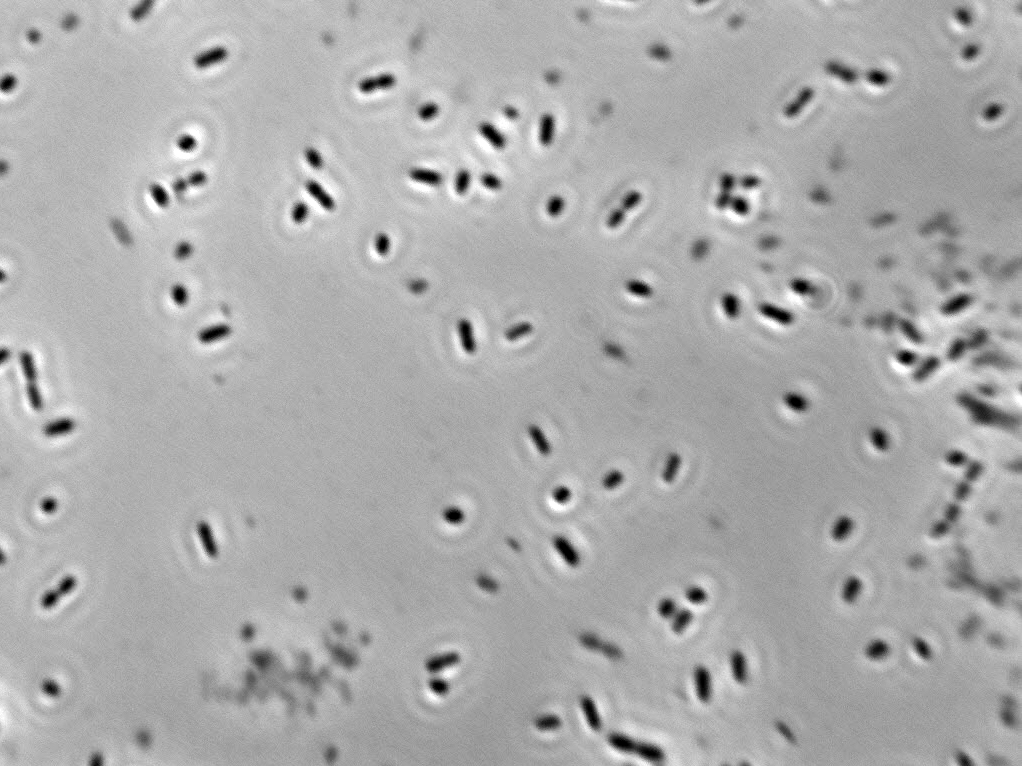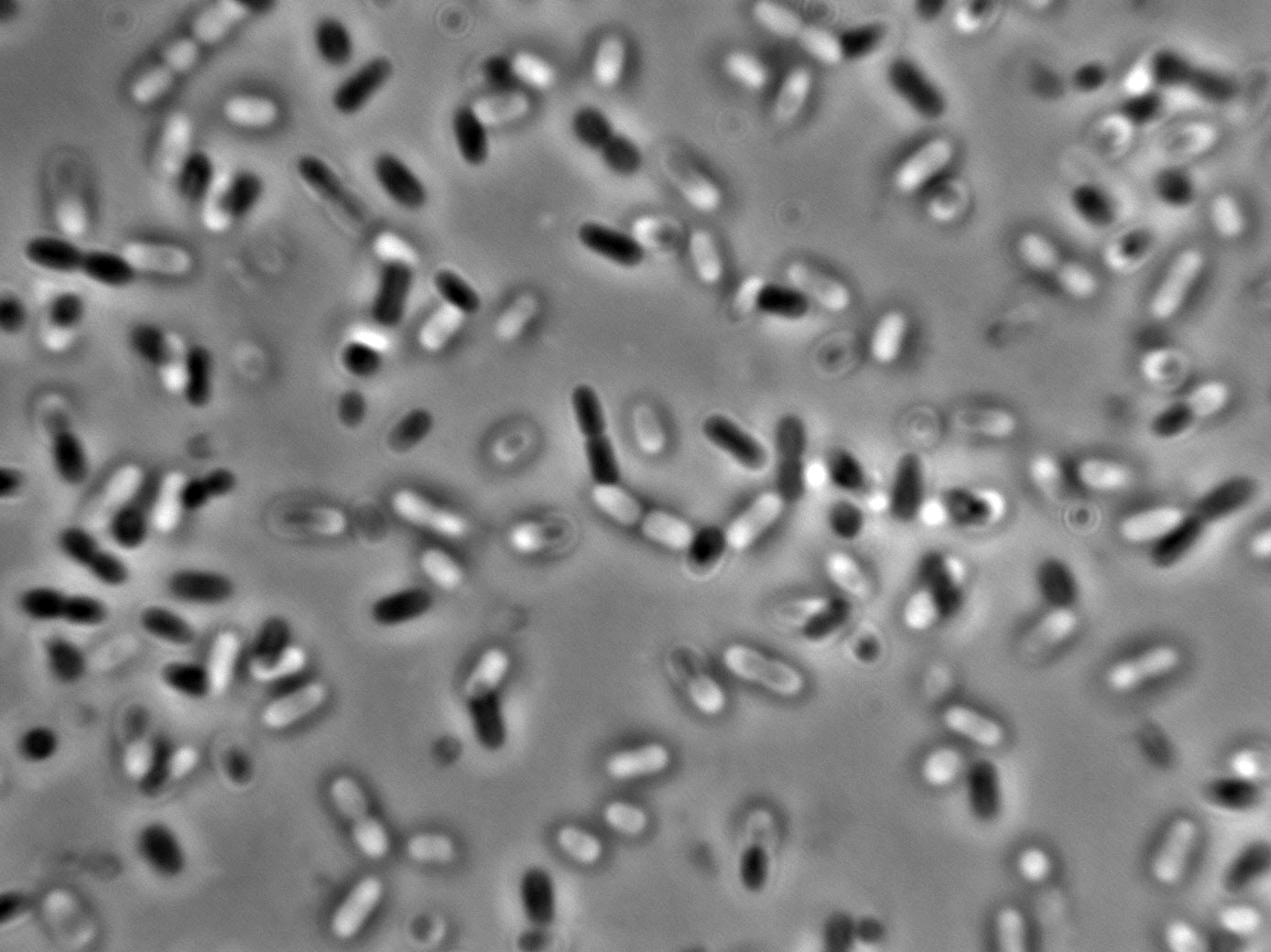Genus/species: Acetobacter tropicalis
Gram Stain: Negative
Morphology:
- Cell: rods that are 0.5-0.7 by 1.8-2.0 micrometers in size. They occur in singles, chains, or in pairs.
- Colony: circular, convex, shiny, and not pigmented.
- Liquid Growth: dispersed
 |
 |
Physiological Traits:
No growth on mannitol. Colonies are positive for catalase activity. Bacteria oxidize ethanol to acetic acid. Oxidizes acetate and lactate to CO2 and water. Production of D-gluconate and 2-keto-D-gluconate from D-glucose, also produces acid from glucose. No oxidase activity detected in colonies. Forms gamme-pyrones from both D-glucose and D-frusctose. Performs ketogenesis from glycerol. Acetobacter tropicalis grows in the temperature range 20 to 37 degrees Celsius and from pH 3.5 to 8.0. Grows well in presence of 5% D-glucose and 2 to 7% ethanol.
Ecological Traits:
Found mainly in tropical regions, hence its name. Was first found in Indonesia in many plants. Isolated frequently from coconut.
Distinguishing Features:
Acetobacter tropicalis can be differentiated from other species using the following characteristics. It produces 2-Keto-D-gluconic acid from D-glucose. Acetobacter tropicalis is unable to grow using ammonium as a nitrogen source with ethanol as the carbon source. It can use both glycerol and maltose as a carbon source, but no growth using methanol as a carbon source. It will not grow on YE+30% (w/v) D-glucose. Catalase test will be positive, and it has between a 55.6-56.2 G+C content of DNA.
Role in wine:
Acetobacter tropicalis is an acetic acid bacteria, so it converts ethanol to acetic acid, using acetaldehyde as an intermediate. Identified in spoiled wine (rare).
Sensitivities:
- SO2: Sensitive
- Sorbate: Can utilize sorbic acid
- DMDC: Sensitive
- pH: Sensitive at 3.0 and below and at 9.0 and above
- Acids: Require acids as growth factors
- Ethanol: Does best in 2-7%
- Anaerobiosis: Obligate aerobe
- Heat: Killed below 20 and above 40 degrees Celsius
References:
Bartowski, Eveline and Henschke, Paul. “Acetic Acid Bacteria Spoilage of Bottled Red Wine – A Review.” Journal of Food Microbiology, June 2008, pages 60-70.
